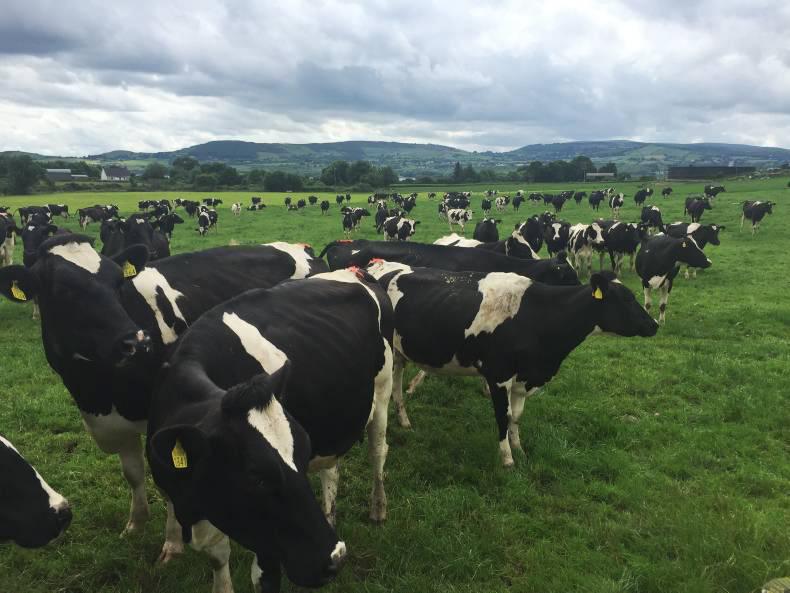The number of cows in the dairy herd in NI increased by another 2% over the 12 months to June 2016 to reach an all-time high of 317,100 head, according to figures from the June agricultural census released last week by DAERA.
Suckler cow numbers also increased, up to 269,700 head, a rise of 4% on last year’s levels, although numbers could be set to stabilise, with replacement in-calf suckler heifers down by 1,000 head to 30,700
However, while the current estimates for the NI suckler herd are only slightly above the average for the previous 10 years of 266,342, the dairy herd is significantly ahead of the average over the same period of 287,883.
That might suggest that there will be significant culling of dairy cows this autumn. So far this year throughput of both dairy and suckler cull cows in NI factories is up 13%, from 50,500 to 57,000 head.
That is probably less than might have been expected, given the recent period of sustained low milk prices. A good grass growing season has potentially delayed culling on farms.
However, perhaps more significant is that the number of in-calf dairy heifers in NI is at a 21 year low at 57,600, which represents a 5% decrease on last year’s levels. With less replacements coming through, some producers might be tempted to hold on to older cows to maintain numbers, especially if the trend of rising milk prices continues.
It should also be noted that the increased dairy cow numbers has not boosted overall milk production, with DAERA figures showing that monthly milk supply in NI was down 11.3m litres or 5.2% in June compared with the same month last year.
That reduced milk supply appears mainly to be due to less concentrates being fed on dairy farms. Dairy compound and blend deliveries are down by 1.9% and 20.2% to 254,000t and 108,200t respectively in the first half of 2016 compared with the same period in 2015.
Calves
The increase in the size of both suckler and dairy herds means there are more calves on the ground, with the total number of calves under six months old and between six and 12 months old increasing by 8% to 297,200 and 6% to 213,300, respectively. The total male and female calves intended for slaughter between one and two-year-old is up 9.7% to 257,800 head, which again suggests that there are higher numbers coming to slaughter later this year.
The breeding sheep flock also increased, with a 1% rise meaning overall breeding ewe numbers reached 950,100. Lamb numbers increased by 2% to a nine-year high of 1,024,500 in June.
In the pig sector, the female breeding herd increased by 2% to 46,400 head, with total pig numbers increasing by 4% to a 17-year high of 595,100 head. Laying birds and broilers increased by 20% to 3.8m and 4% to 14.8m respectively.
Crops
The total area planted with cereals increased by 2% to 33,600ha after decreasing for four years in a row, although the spring barley area decreased by 3% from 2015 levels, but still accounted for 45.2% of the cereals area planted.
The area of winter barley and wheat both increased by 500ha and the area of oats planted by 200ha. Arable silage and maize both decreased by 5% to 3,100ha and 8% to 1,400ha respectively, whereas the area of potatoes planted increased for the first time in eight years to 3,700ha, up 4% on 2015 levels.






 This is a subscriber-only article
This is a subscriber-only article









SHARING OPTIONS: